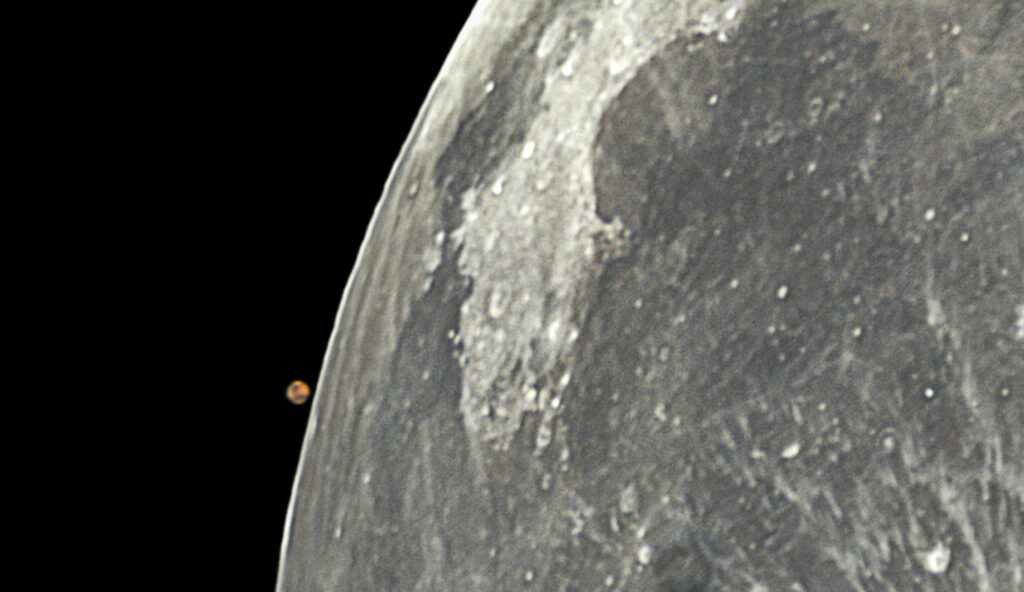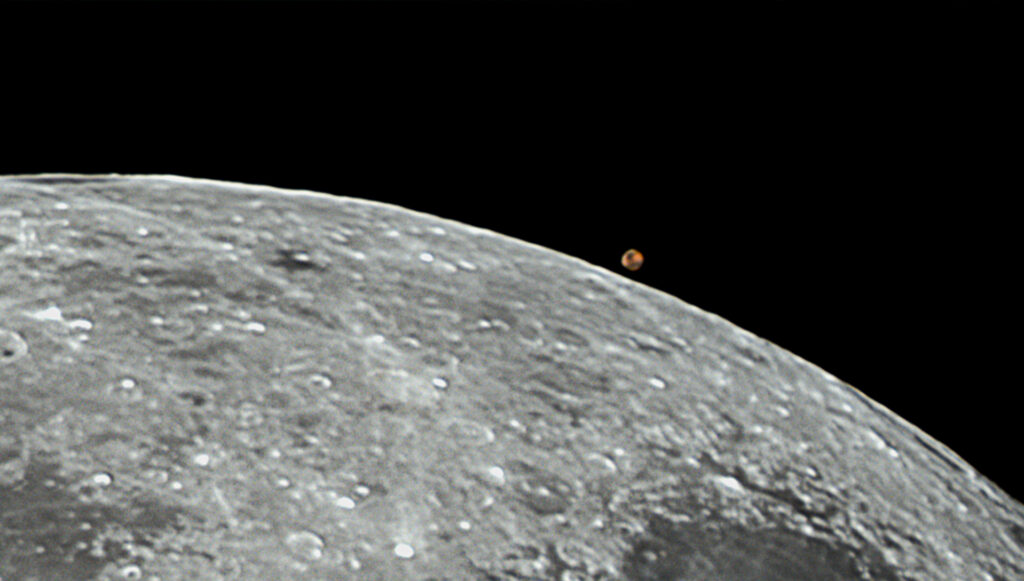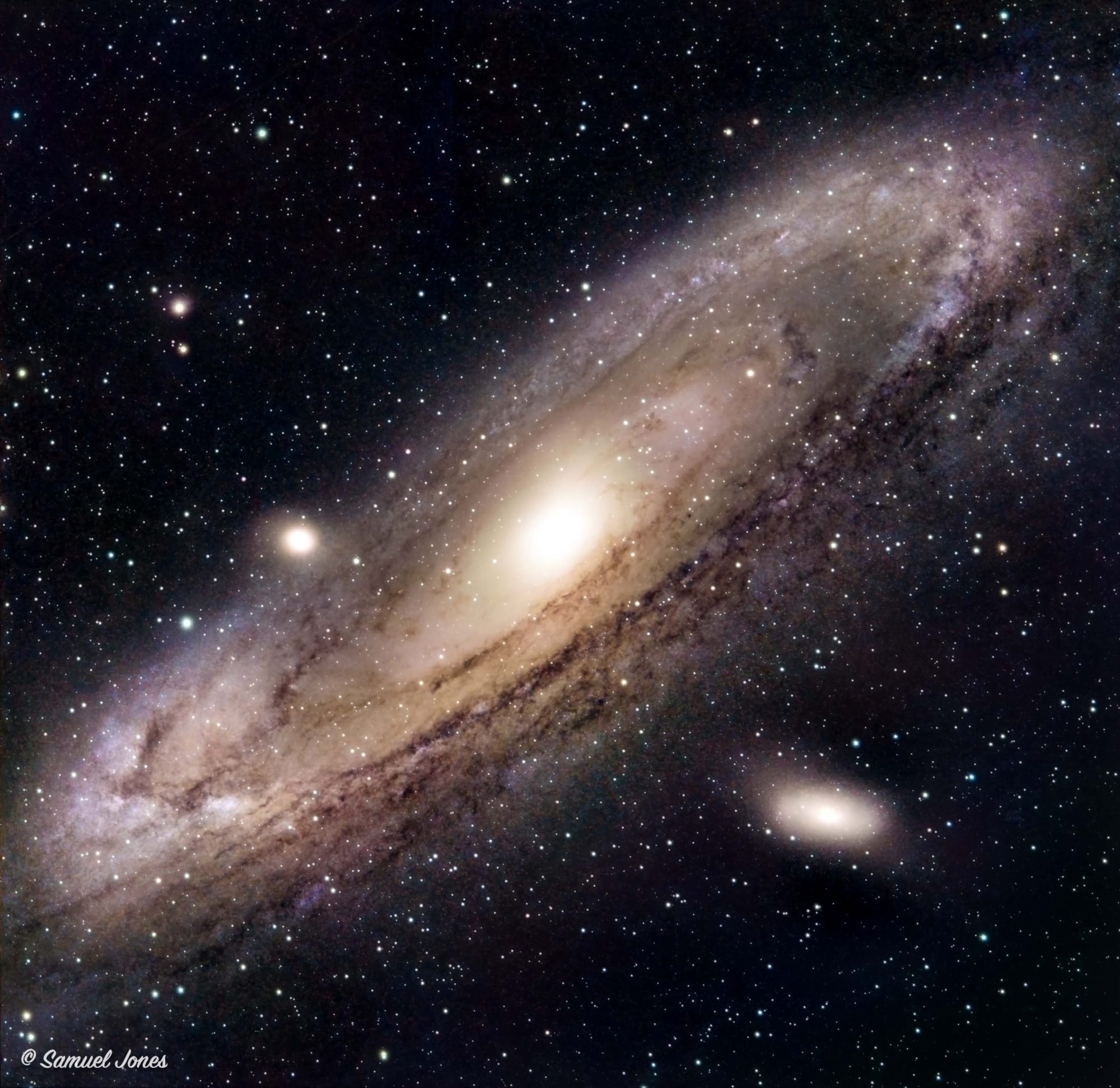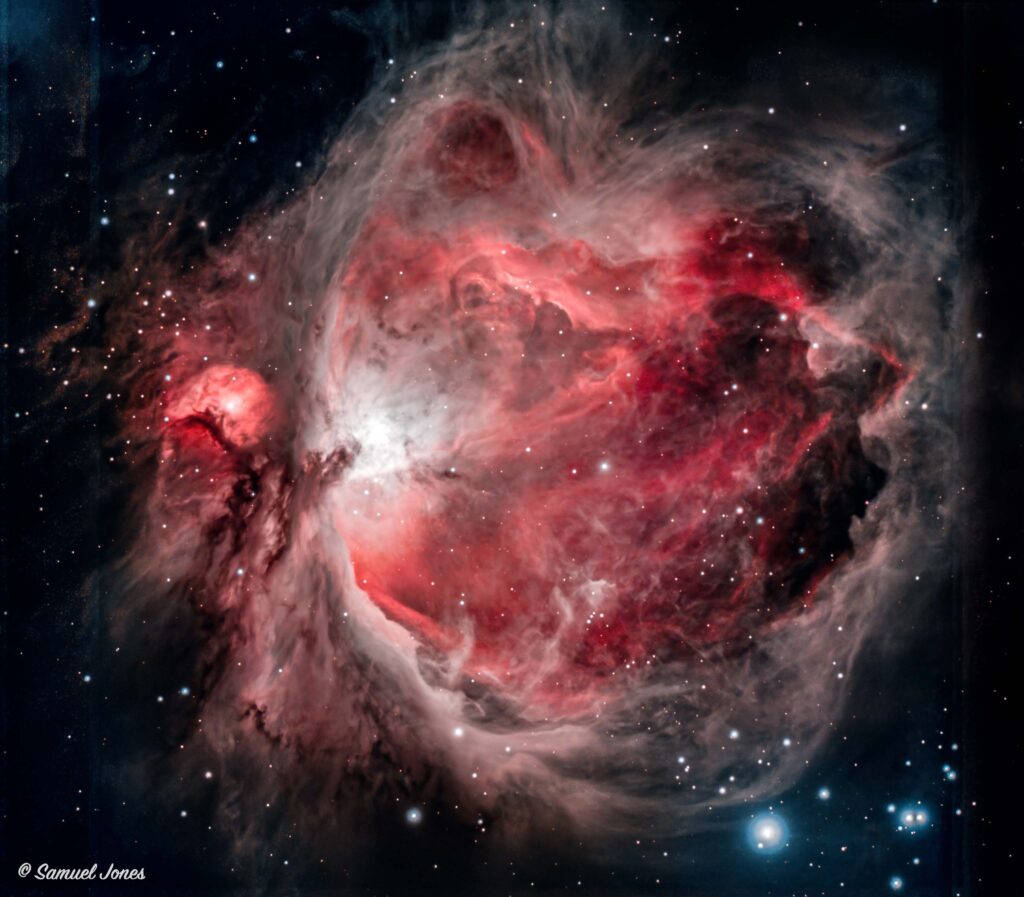for by wise guidance you can wage your war, and in abundance of counselors there is victory.
Proverbs 24:6
Watch Mars pass behind the Moon during the Moon and Mars occultation! This was on January 13th 2025! Close up video was captured with a 6 inch GSO Classical Cassegrain telescope and a ZWO ASI462MC mounted on a ZWO AM3.
SharpCap was used to film the event on my laptop and the frames were processed using AutoStakkert for stacking and Registax for wavelet sharpening.
Each video was just under 6000 frames. I extracted each frame, grouped them into groups of 300 and stacked them. Then applied a wavelet sharpening to each image. Each image was then put in davinci resolve to create a video.
Setting behind the Moon

Rising on the other side


